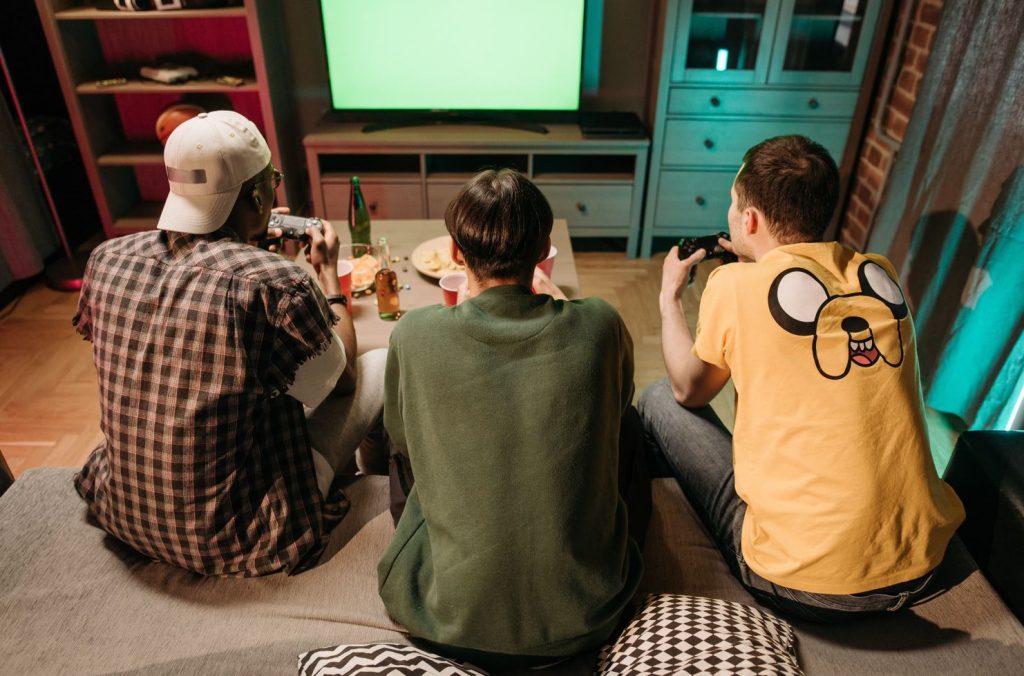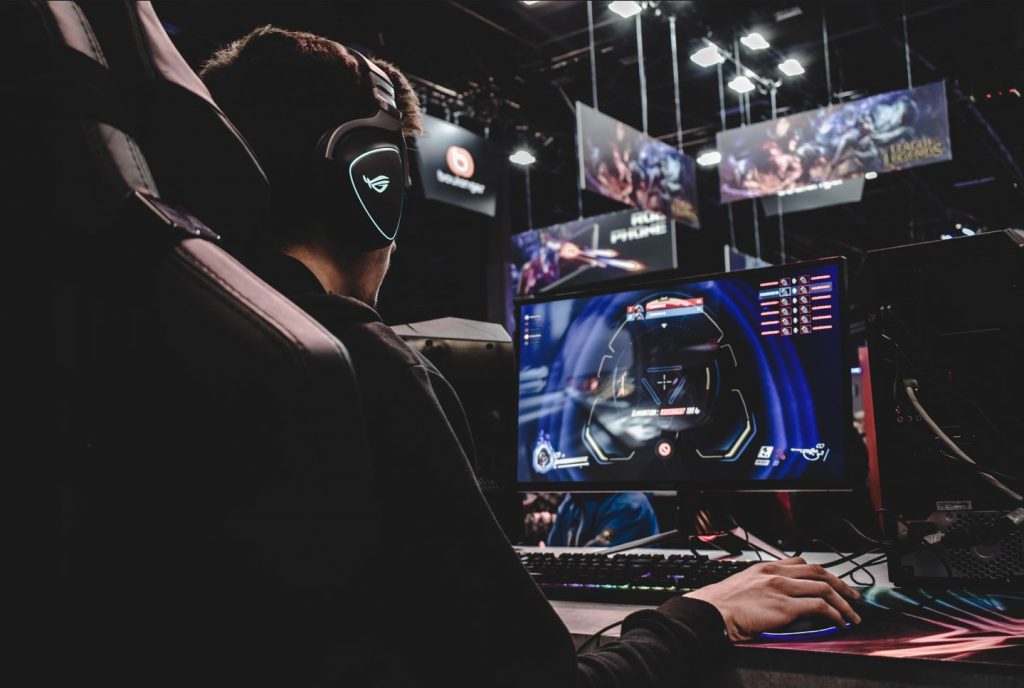To game is to belong
In August 2023, my colleague, Kamilla Knutsen Steinnes, and I published a SIFO report addressing male gamers’ (16-18 y.o.a.) relationship to loot boxes (Borch and Steinnes, 2023). Loot boxes can be defined as “mystery packages” of digital content in video games that give them advantages (e.g., skills like being stronger and running faster) or cosmetic items (e.g., a nice sword or shining armour) for use within the context of the game. Most loot boxes cost money. If so, gamers spend sums of money for a chance to receive a desirable reward (Forbrukerrådet (FR), 2022).

Young people and loot boxes
The report was financed by the Norwegian Media Authority (Mediatilsynet) with money reserved for gambling research. The funding must be seen in the context of a growing concern regarding the sale and marketing of loot boxes in games played by children and youth, especially on mobile phones (Steinnes, 2022). The first loot boxes were launched in 2004 (Vito, 2021). In 2020, the gross turnover of loot boxes was 15 billion US dollars (FR, 2022). In 2022, the estimated gross turnover had increased to 50 billion US dollars (Uddin, 2021). Children and youth are regarded as vulnerable consumer groups who need special protection by law (FR, 2022). Currently, national governments around the world discuss if and, if so, how lootboxes should be regulated. In Belgium and the Netherlands, loot boxes are perceived as a form of gambling and regulated accordingly (FR, 2022).

Findings from a Norwegian context
Special attention was in this report paid to the young gamers’ knowledge, experiences and attitudes associated with loot boxes, as well as their opinions about how loot boxes should be regulated by law. An observation from this study is that gamers have high knowledge about loot boxes and that this knowledge primarily is based on their own experiences as gamers obtained without guidance from adults. Most gamers bought their first loot box at the age of 12 and became more critical of loot boxes as they got older. From their point of view, loot boxes should not be forbidden, but more strictly regulated. For example, an age limit should be set, and the loot boxes should be bought with real money rather than in-game currency. When paying for loot boxes, it should be more difficult to use the bank account number of their parents without their consent, and the extra sum that often remains after loot boxes are bought should be forbidden as the money only can be spent on more loot boxes. The loot boxes’ use of gambling mechanisms to trigger sales is easily recognizable. Among others, the gamers do not know what they get. Whether they win or lose, they are predicted to play more, respectively to exploit their winning luck, or to win back some of the loss. The excitement of buying loot boxes increases over time (it takes up to 10 seconds to open a loot box), and many loot boxes are designed to create a “near-winning”-illusion triggering gamers to try once again if they lose.

Belonging and loot boxes
However, as a “belonging researcher”, I was not primarily struck by the gamers’ knowledge and opinions about loot boxes, nor the obvious gambling mechanisms underpinning them. No, what struck me most were the social aspect and the strong motivation to belong that seemed to lay behind the young gamers’ purchase of loot boxes. I have never bought a loot box myself. Nor am I a gamer. Before we did the research, I had the understanding that gamers primarily played and, hence, bought loot boxes because they wanted to be entertained and/or to compete. Now, I got the impression that they, ultimately, did it to belong to other gamers – mostly friends they also met in their physical lives. In gaming theory, games are often categorized as either multi-player or single-player, in which the former games are played together with others and the latter are played alone. Symptomatically, loot boxes are only offered in multi-player games. If they were offered in single-player games, very few would buy them because they have no one to show their new skills or looks to. To belong, people need to be visible to others (Pugh, 2009). From this point of view, gamers may buy loot boxes to become visible to others either by showing them that they possess the same skills and cosmetics as them. For some, having the same skills or cosmetics is not enough. They need better skills or better cosmetics, either because they want a higher position in the group, or because they think they need to be better to deserve a position in the group at all. In the latter case, being better is not necessarily a sign of self-esteem and strength, but rather the opposite.

Games as social arenas
Games are not only a social arena in which gamers meet friends. They are also arenas about which people can socialize by being a common topic of conversation. The research on young gamers was based on focus group interviews. Researching young men in potentially unwell situations like this is not always easy. In this case, however, it was. Seldom have young people talked more freely and engaged in focus groups. At one point in the conversation, I asked them if gaming is “the new football” in the sense of being a topic for conversation about which all can talk, for example when eating lunch at the canteen. The answer was something like “We know what you mean. Yes, but no. It isn’t that wide yet”. If gaming is “almost football”, gaming has the potential to become a common cultural phenomenon with the power of binding people together and thereby be one of many components building cultures that go far beyond that of a game or a group of friends. Loot boxes may not be a key component in these conversations, but definitely part of it. For this reason, the role of loot boxes in society should not be underestimated. A report from the Norwegian Media Authority (2022) shows that children start gaming in early age. 9-10 y.o.a. 95% boys and 88% girls report that they are gaming. This indicates that gaming plays an important role in children’s everyday life. For most children, loot boxes represent an innocent introduction to gambling-like entertainment. Further for some children, however, they may be the first stepping stone to a long career as “gambling addicted”. It makes me sad thinking about the possibility that it, ultimately, was the children’s fundamental need to belong that released this career – triggered by innovative gaming businesses exploiting their vulnerability as (minor) human beings, and by politicians letting them do so.

Bio
Anita Borch er prosjektleder av Belong-prosjektet. Hun er utdannet sosiolog ved Universitetet i Oslo og tok sin doktorgrad ved Universitetet i Helsinki. Borch er i dag ansatt som forsker I ved SIFO. Hun har jobbet med en rekke tema, blant annet kjøpestopp, matsikkerhet, energiforbruk i hjemmet, julegavegiving, forbrukerkunnskap blant unge, økonomisk likestilling, digitale medier og barn og reklame.
References
Borch, A. and Steinnes, K. K. (2023) Unges forhold til kjøp av overraskelsespakker (lootboxes) i dataspill. SIFO-Rapport 4 – 2023. Forbruksforskningsinstituttet SIFO OsloMet – storbyuniversitetet.
Forbrukerrådet (2022) Insert coin. How the gaming industry exploits consumers using loot boxes. Forbrukerrådet, 31.5.2022.
Medietilsynet (2022) Spillfrelste tenåringsgutter og jenter som faller fra. Slik gamer barn og unge. Barn og Medier 2022. November 2022.
Pugh, A. (2009) Longing and Belonging: Parents, Children and Consumer Culture. University of California Press, Berkley, CA.
Pugh, A. (2010) Distinction, boundaries or bridges?: Children, inequality and the uses of consumer culture. Poetics, 39, 1-18.
Steinnes, K. K. (2022). “Free to play – pay to win”: How games are designed to incentivize consumption of virtual goods in-game. Submitted manuscript.
Uddin, S. (2021). Loot the children: The need to regulate predatory loot box mechanics in video games that target young audiences. Family Court Review 59(4): 870-885.
Vito, J. (2021) The Evolution of Loot Boxes, Crates, and UT Cards, PSU.com. https://www.psu.com/news/the-evolution-of-loot-boxes-crates-and-ut-cards/